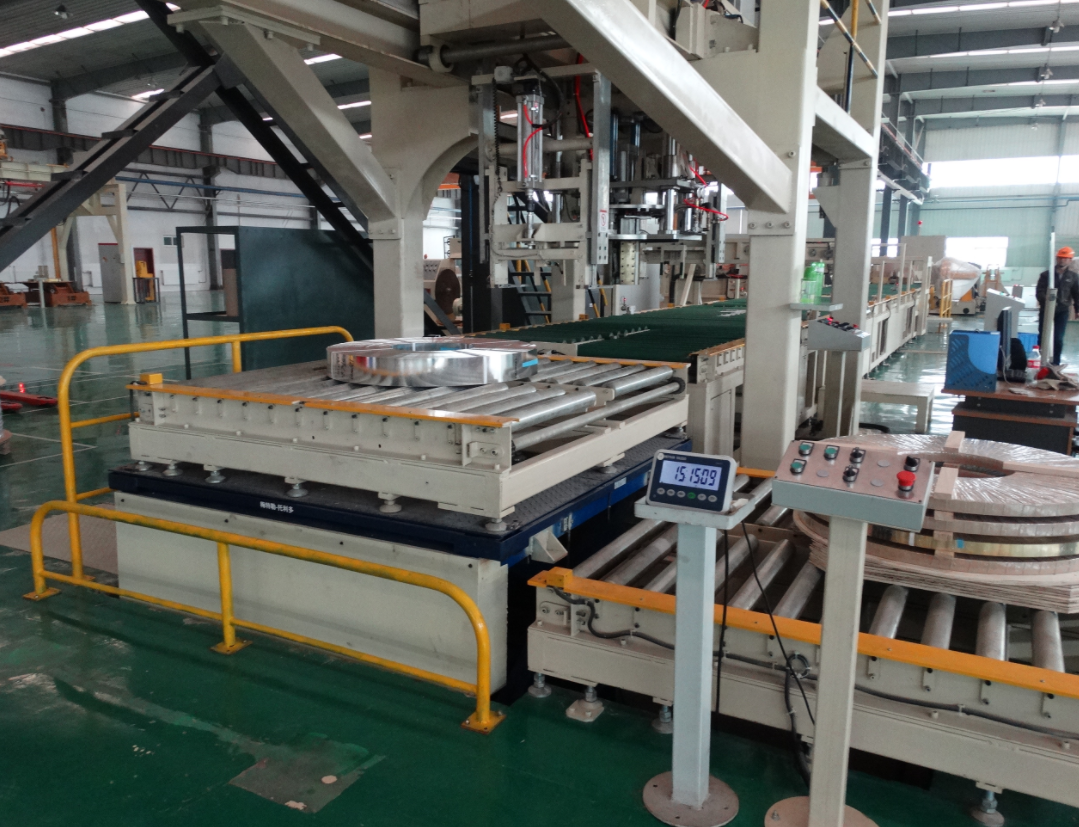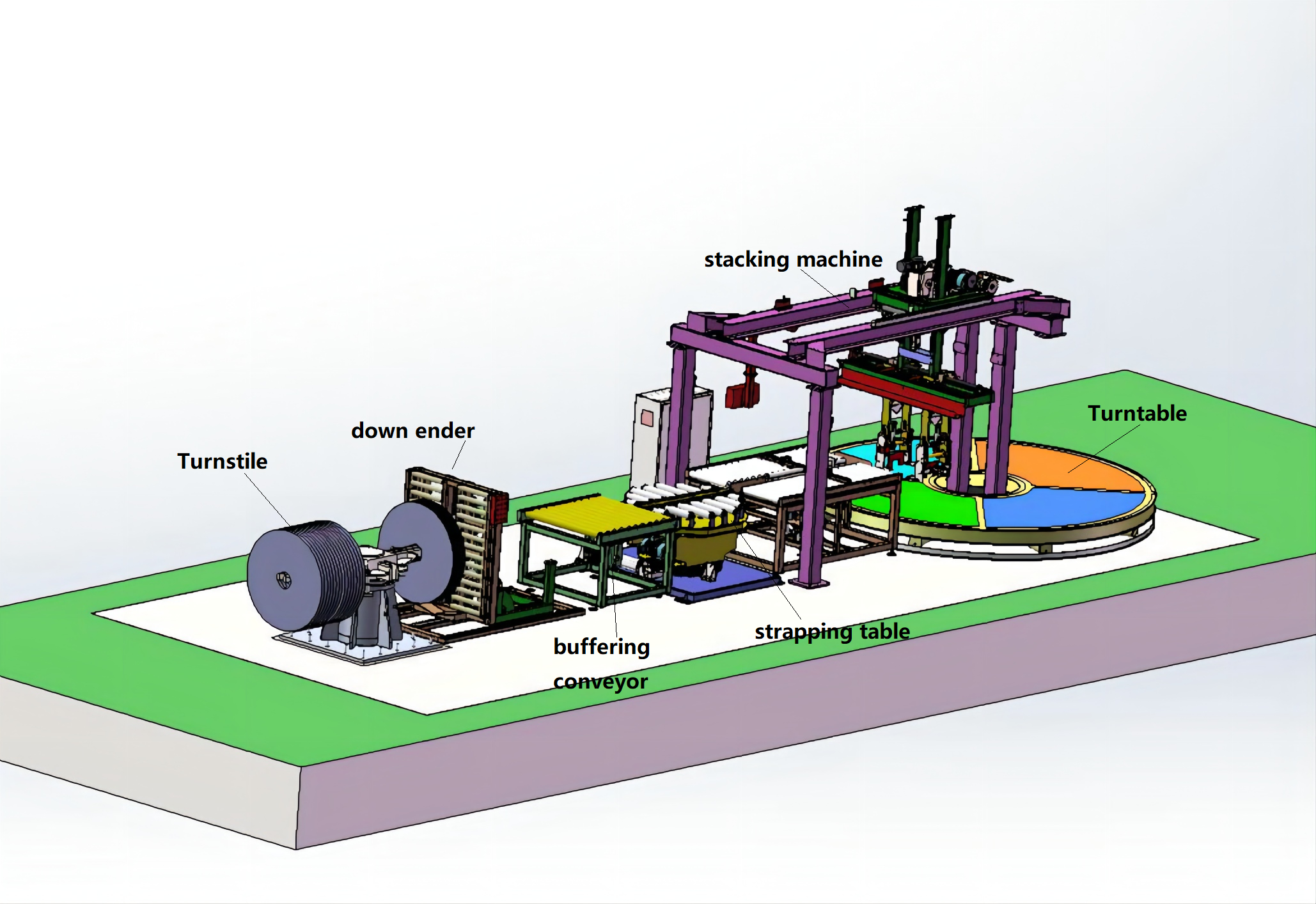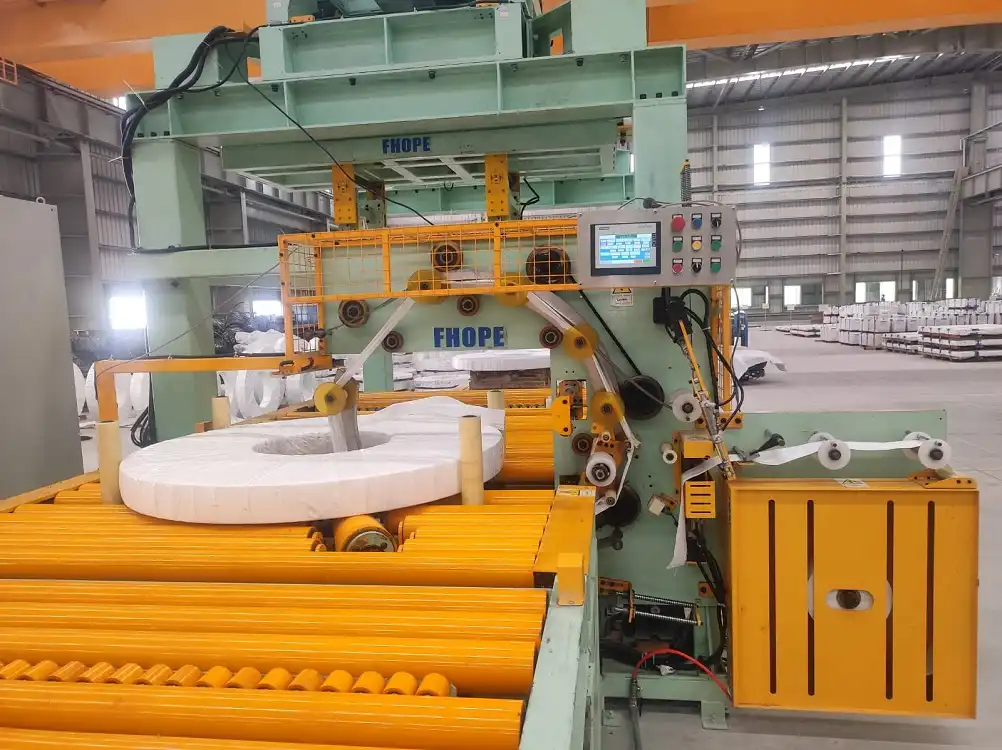As a steel mill owner, you face constant pressure. I know this because I've spent my life in the packaging machine industry, first as an engineer and now as a factory owner myself. You deal with volatile energy prices that can destroy your profit margins. You have aging equipment that seems to fail at the worst possible moments, threatening your production targets. And on top of it all, strict environmental rules in Europe mean you have to invest heavily just to stay compliant. It feels like a battle on all fronts. You've likely optimized your main production processes, but the end of the line—your coil packaging—can often be a hidden source of high costs and major bottlenecks. An old, inefficient packaging line can undo all the hard work and investment you've put in upstream. Investing in new machinery is a massive decision. You need to be certain that it will deliver a clear return on investment and solve your most pressing problems, not create new ones.
The top features that experienced Greek factory owners look for in modern coil packaging lines are high-efficiency servo-drive systems to cut energy consumption, full automation to ensure production stability and reduce labor dependency, seamless data integration for connection with MES and ERP systems, and a modular design that future-proofs the investment by allowing for easy upgrades and scalability.

In my journey from a young engineer to founding SHJLPACK, I've seen firsthand what separates a good investment from a bad one. It’s not just about the machine's speed or price. It’s about how that machine becomes a strategic asset for your entire operation. It's about turning your packaging line from a cost center into a source of efficiency and data. In this article, I want to break down these key features. I'll use my own experience to show you exactly how they can impact your bottom line, help you meet your goals for efficiency and cost reduction, and make your operation more resilient for the years to come.
How can a packaging line directly tackle rising energy costs?
Your monthly energy bill is a constant worry. The price of electricity is unpredictable, and it directly impacts your cost per ton of steel produced. You have likely spent a great deal of time and money making your furnaces and mills more efficient. But what about the equipment at the very end of your production line? Older coil packaging lines, especially those running on hydraulic power, are often silent energy hogs. They consume a steady stream of power just to stay ready. This continuous drain on resources works directly against your goal of lowering unit production costs and improving your profit margin. You need a solution, and a modern packaging line offers a very direct one.
A modern coil packaging line directly tackles rising energy costs by replacing inefficient hydraulic and pneumatic systems with high-efficiency all-electric servo motors and variable frequency drives (VFDs). These advanced systems are designed for "power-on-demand" operation, meaning they consume significant energy only when performing an action, which can lead to energy savings of up to 50-70% compared to older, continuously running hydraulic lines.

The Critical Shift from Hydraulic to Electric Servo Systems
For many years, hydraulic systems were the standard for heavy-duty applications like coil packaging. They are powerful and robust. But their biggest weakness is inefficiency. A hydraulic power pack must run continuously to maintain pressure in the system, even when the machine is idle between coils. This is like leaving a car engine running at a stoplight. It wastes a tremendous amount of energy. Furthermore, these systems are prone to oil leaks, which creates safety hazards and environmental concerns. Maintenance is also intensive, requiring regular checks on hoses, filters, and fluid levels.
Modern packaging lines have moved to all-electric servo drive systems. This is a game-changer for energy efficiency. A servo motor only draws significant power when it is moving to perform a task, like rotating the coil or applying wrapping film. When it's idle, its energy consumption is almost zero. This "power-on-demand" principle alone can cut the line's energy usage in half. Servos also offer superior precision and control, leading to more consistent wrapping and strapping, which can reduce material waste.
Here is a simple comparison:
| Feature | Hydraulic System | Electric Servo System |
|---|---|---|
| Energy Consumption | High (runs continuously) | Low (power-on-demand) |
| Precision & Control | Good | Excellent |
| Maintenance | High (oil, filters, hoses) | Low (fewer mechanical parts) |
| Environmental Risk | High (risk of oil leaks) | Very Low (no oil) |
| Operating Noise | Loud | Quiet |
The Supporting Role of Variable Frequency Drives (VFDs)
Beyond the main wrapping and strapping motors, a packaging line has many other motors, such as those on the conveyor belts. In older systems, these motors often run at a single, constant speed. They turn on with a jolt of high starting current and run at full power, even if the line is moving slowly. Modern systems use Variable Frequency Drives (VFDs) on these motors. A VFD allows the motor's speed to be precisely controlled. It can ramp up and down smoothly, which eliminates the high inrush of current at startup. This not only saves energy but also reduces mechanical stress on the components, extending the life of the equipment. By matching the motor's speed exactly to the task required, VFDs ensure that no energy is wasted. This level of control is crucial for achieving an ambitious goal like a 10% reduction in unit energy consumption.
What does 'full automation' really mean for an aging workforce and production stability?
You know that finding and retaining skilled labor is one of the biggest challenges in the heavy industry today. Your most experienced operators may be approaching retirement, taking decades of valuable knowledge with them. Relying on manual operations for critical tasks like strapping, labeling, and moving multi-ton coils creates multiple risks. It can lead to human error, serious safety incidents, and inconsistent cycle times. These inconsistencies create bottlenecks that ripple backward through your entire production line, making it almost impossible to achieve a high-level goal like 95% equipment uptime. So, when a supplier talks about "full automation," you have to ask: is it just a buzzword, or is it a practical solution to these real-world problems?
For a steel mill facing challenges with an aging workforce and the need for greater stability, 'full automation' means creating a cohesive, "lights-out" packaging process. In this system, coils are received from the slitting line, identified, centered, strapped, wrapped, weighed, labeled, and dispatched to a storage or loading area with minimal to no human intervention. This ensures perfectly consistent cycle times, dramatically enhances worker safety, and makes your output predictable and reliable.

The Key Components of a Truly Automated Line
Full automation is not about a single machine; it's about integrating a series of machines and sensors that work together seamlessly. The process flows logically from one step to the next without manual hand-offs. A typical fully automated line I design for clients includes:
- Automatic Coil Loading: A turnstile or walking beam conveyor receives the coil from the C-hook or coil car.
- Coil Identification: Barcode or RFID scanners automatically read the coil's ID, pulling its specifications from your production system.
- Centering and Positioning: Sensors and mechanical guides perfectly center the coil for the subsequent steps. This is critical for consistent quality.
- Automatic Strapping: The strapping heads apply straps both radially (around the circumference) and axially (through the eye), all based on pre-programmed recipes for that specific coil type.
- Through-the-Eye Wrapping: A shuttle travels through the coil's eye to wrap it completely, providing superior protection against moisture and damage.
- Weighing and Labeling: An integrated scale records the final weight, and an automatic label applicator prints and applies a detailed label with all necessary data, including weight, dimensions, customer info, and a barcode for tracking.
- Automatic Stacking/Dispatch: The finished coil is then moved by conveyors to an automatic stacking system or a designated area for forklift pickup.
How Automation Directly Impacts Your Key Business Metrics
Implementing such a system has a direct and measurable impact on the goals of a forward-thinking factory owner. It moves your operation from being reactive to being predictable. An automated line doesn't get tired, distracted, or take breaks. Its cycle time is the same for the first coil of the day as it is for the last. This consistency is the key to preventing bottlenecks and achieving high capacity utilization. When the end of your line is stable, your upstream processes can run more smoothly.
Let's look at the practical differences:
| Metric | Manual / Semi-Auto Process | Fully Automated Process |
|---|---|---|
| Cycle Time | Variable, depends on operator | Consistent and predictable |
| Labor Requirement | High (multiple operators) | Low (1 supervisor for multiple lines) |
| Safety Incidents | Higher risk (handling straps/tools) | Very low risk (operators are outside safety fencing) |
| Data Accuracy | Prone to human error (manual entry) | 100% accurate (scanned and system-generated) |
| Uptime Contribution | Can be a bottleneck | A stable, predictable component |
By removing the variables of manual labor, you increase safety, improve data quality, and, most importantly, create a reliable packaging capacity that you can count on, hour after hour. This is the foundation for hitting that 95% uptime target.
Beyond the machine, why is data integration and IoT capability a non-negotiable?
You are likely already investing in a digital transformation for your plant. You might be implementing a Manufacturing Execution System (MES) or an Enterprise Resource Planning (ERP) system to get a clear, real-time picture of your entire operation. The goal is to make decisions based on data, not just experience. But what happens if your brand-new, expensive packaging line is a "black box"? If it can't communicate with your other systems, you've just created a massive blind spot at the end of your production chain. This lack of data makes true cost analysis difficult, makes predictive maintenance impossible, and prevents you from optimizing your entire production flow from raw material to finished product.
Data integration and Internet of Things (IoT) capability are non-negotiable in a modern packaging line because they are what transform the machine from an isolated piece of equipment into an intelligent asset. This capability allows the line to feed real-time data directly into your MES and ERP platforms. This data stream is essential for achieving comprehensive production visibility, enabling data-driven predictive maintenance, and accurately tracking costs, making the packaging line a fully integrated part of your smart factory vision.

What Data Should Your Packaging Line Provide?
A truly "smart" packaging line is equipped with sensors that monitor every aspect of its operation. This isn't just about counting how many coils it wraps. It's about providing granular data that you can use to make better business decisions. The essential data points that should be communicated to your central system include:
- Coil Identity Data: Coil ID, customer order number, dimensions, and grade.
- Weight Data: Gross weight before packaging and net weight after.
- Consumable Usage: The exact amount of wrapping film and the number of steel straps used for each specific coil.
- Process Data: Cycle time per coil, wrapping speed, and strapping tension settings.
- Machine Health Data (IoT): Motor temperatures, vibration analysis, drive currents, and operating hours for key components.
- Alarms and Faults: Real-time error codes that specify the exact nature and location of any problem.
From Raw Data to Actionable Decisions
Collecting data is easy; the important part is what you do with it. This is where integration with your MES/ERP platform becomes so powerful. It allows you to connect the packaging line's data to your broader business goals.
- Achieving the 8% Cost Reduction Goal: By tracking the exact amount of wrapping film and straps used per coil, you can analyze and optimize your packaging recipes. You might discover you are over-packaging certain products. This data allows you to precisely calculate the packaging cost for every single coil you produce and tie it directly to a customer order in your ERP system.
- Enabling Predictive Maintenance for 95% Uptime: This is where IoT sensors are critical. Instead of waiting for a motor to fail and shut down your line, IoT vibration or temperature sensors can detect early signs of wear. The system can automatically flag the component for inspection or create a work order for the maintenance team, allowing you to schedule repairs during planned downtime. This shifts you from a reactive maintenance model to a predictive one.
Here’s how data translates into action:
| Data Point | Insight Generated | Business Action | Goal Supported |
|---|---|---|---|
| High Motor Temperature | Motor is overheating, potential failure. | Schedule maintenance to check cooling/bearings. | Increase Uptime |
| Film Consumption per Coil | Some coils use 15% more film than spec. | Adjust wrapping program for that coil type. | Reduce Operating Cost |
| High Cycle Time Faults | A specific sensor is faulting intermittently. | Replace the sensor during the next shift change. | Increase Capacity Utilization |
| Coil ID + Final Weight | Complete data for this coil is logged. | Automatically generate shipping documents in ERP. | Digital Transformation |
For a CEO like you, this means you can have a dashboard that shows the real-time Overall Equipment Effectiveness (OEE) of your packaging line, its cost per ton, and its health status, all from your office. That is the power of true data integration.
A Personal Insight From My Journey
When you look at a proposal for a new packaging line, it's natural to focus on the technical specifications and the final price. As an engineer, I love the details. As a business owner, I understand the pressure of capital budgets. But after spending my entire career in this industry, from working on the factory floor to building SHJLPACK from the ground up, I have learned one lesson that stands above all others: the cheapest machine is almost always the most expensive one to own in the long run. The real value is not in the steel and motors alone.
My deepest insight, born from years of experience, is that you are not just buying a machine; you are investing in a partnership and a long-term solution. The best equipment suppliers do not just sell you a standard product from a catalog. They act as strategic partners. They take the time to understand the unique challenges of your market, whether it's in Greece or anywhere else, and work with you to design a system that will solve your problems today and grow with your business tomorrow.

What a True Strategic Partnership Looks Like
I remember a client years ago who was expanding his slitting operation. He had proposals from us and from another company that was significantly cheaper. He chose the cheaper option. Six months later, he called me. The machine was constantly breaking down, the support was slow, and it couldn't keep up with his new slitting line. The money he "saved" on the initial purchase was lost many times over in downtime, missed orders, and frustration. He ended up replacing that machine less than two years later.
That experience solidified my mission for SHJLPACK. I wanted to build the company that I would want to buy from. A true partnership is built on trust and shared success, and it covers the entire lifecycle of the equipment.
Three Pillars of a Strong Partnership:
- Deep Pre-Sale Analysis: A partner doesn't start by showing you machines. They start by asking questions. What are the exact dimensions and weights of your coils? What is your factory layout? What are your biggest bottlenecks? What are your growth plans for the next five years? The goal is to design a solution that is tailored to your specific needs, not to sell you what's easy.
- Expert Installation and Training: The team that installs your equipment should be the same engineers who understand its design, not third-party contractors. More importantly, they should be dedicated to training your operators and maintenance staff thoroughly. A successful handover means your team feels confident and capable of running and maintaining the line on their own. The goal is to make you self-sufficient.
- Proactive After-Sales Support: The relationship doesn't end when the final payment is made. A true partner provides responsive support when you need it. They maintain a stock of critical spare parts for quick delivery. And they are proactive, contacting you with potential software updates or new modules that could improve your efficiency even further.
I achieved my own financial independence because of the opportunities this industry gave me. My goal now is not just to sell machines. It is to share the knowledge I have gained and to help other business owners like you succeed. That means building partnerships and delivering total solutions that solve real problems for the long term.
Conclusion
A modern coil packaging line is a strategic investment that directly addresses your key challenges. It cuts energy costs, boosts efficiency, enhances safety, and prepares your Greek factory for a digital future.





